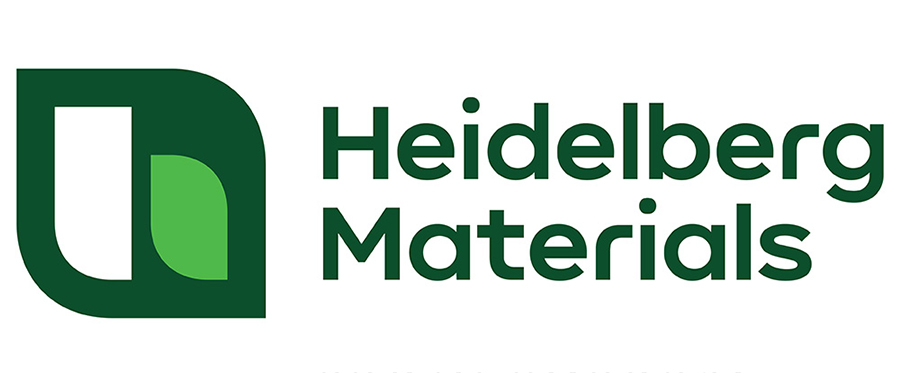Used extensively by the ancient Romans, cement is one of the world’s oldest building materials. Over the centuries, it has evolved into a complex, sophisticated material. Yet the fundamental benefits it brings to construction — strength, durability, and resilience — are valued more than ever. For more information on Lehigh’s portland cement download our product data sheets (PDS) for USA PDS and Canada PDS.
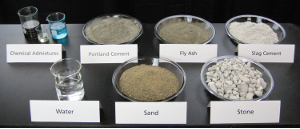
Cement or Concrete?
While the terms are often used interchangeably, concrete and cement are not the same. Cement is an ingredient of concrete. It’s the fine grey powder that, when mixed with water, sand and gravel or crushed stone, forms the rock-like mass known as concrete. Cement typically accounts for 10% to 12% of the concrete mixture.
Cement acts as the binding agent or glue in concrete. When combined with water, cement forms a paste that coats the sand and gravel. Through a chemical reaction called hydration, the mixture sets and hardens into concrete.
When freshly mixed, concrete can take any shape or form; when hardened, it’s strong and durable. These qualities explain why one material, concrete, can build everything from skyscrapers and sidewalks to highways and dams.
Although natural cement dates back to the Romans, by the late 1800s builders were turning to its manufactured counterpart, portland cement, for higher strength and more consistent performance.
English bricklayer Joseph Aspdin is widely credited for the invention of modern portland cement. Aspdin received the first patent on portland cement in 1824. He named it “portland” cement because concrete made with it resembled a highly prized building stone quarried on the Isle of Portland.
The name endured. Today, portland cement is not a brand name, but the generic term for the type of cement used in most concrete.
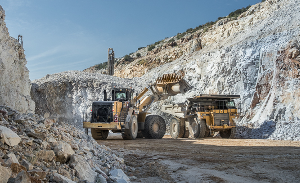
From Quarry to Kiln to Concrete
Portland cement manufacturing is a three-step process:
- Cement-making requires calcium, silica and small amounts of alumina and iron. Raw materials rich in these elements include limestone, sand and clay. They are quarried at the cement manufacturing plant or shipped from nearby. Limestone, the source of calcium, makes up about 80% of the raw materials for cement.
- The materials are combined, blended and ground together, then processed in a huge industrial furnace called a kiln, which reaches temperatures of 1,450° C (2,650° F) or more. The intense heat triggers chemical reactions that form an intermediate product called clinker.
- The pellets of red-hot clinker are cooled and ground with a small amount of gypsum. The result is a fine powder that is now considered portland cement. Cement is ground so finely that it will pass through a sieve that is fine enough to hold water.
Most cement is used to produce ready mixed concrete, which is delivered to construction sites in the familiar trucks with revolving drums. Other concrete applications include precast products, pipe, masonry, oil and gas drilling and soil stabilization.
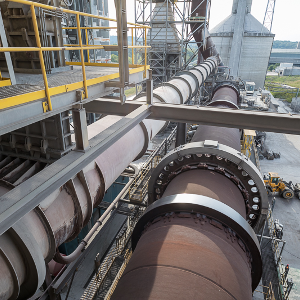
A Cement for All Reasons
Engineers and construction professionals often specify a certain type of portland cement to meet special requirements of conditions.
Cement types are defined by a variety of standards and specifications. Portland cements conform to the American Society for Testing and Materials (ASTM) C150 Standard Specification for Portland Cement and Canadian Standards Association (CSA) A3001. Some cements may meet multiple types. All Lehigh Cement products are manufactured to comply with applicable CSA, ASTM, AASHTO or API Standards.
The standards above address the following types of portland and general use cement:
ASTM Type I (CSA Type GU), Normal / General Use: General purpose portland cement suitable for concrete that does not require special properties. Type I cement is commonly found in general construction applications such as most buildings, bridges, pavements, precast and masonry units, etc.
ASTM Type II (CSA Type MS), Moderate Sulfate Resistance: Portland cement used for concrete exposed to soil or water with moderate sulfate concentrations. Other measures for controlling sulfate resistance, such as the use of blended cements which provide an equivalent or better performance, are becoming more common in certain areas.
ASTM Type II-MH (CSA Type MH), Moderate Heat of Hydration: Moderate sulfate-resistant cement that also reduces heat generation caused by hydration. Other measures for controlling the heat of hydration and sulfate resistance, such as the use of blended cements which provide an equivalent or better performance, are becoming more common in certain areas.
ASTM Type III (CSA Type HE), High Early Strength: Portland cement that develops strength sooner than normal cements and is suitable for rapid construction, early form removal, cold weather, or when the concrete must be put into service quickly.
ASTM Type IV (CSA Type LH), Low Heat of Hydration: A slow reacting cement which minimizes heat generation used in concrete for massive structures, such as bridge supports or dams. Other measures for controlling the heat of hydration, such as the use of blended cements which provide an equivalent or better performance, are becoming more common in certain areas.
ASTM Type V (CSA Type HS), High Sulfate Resistance: Portland cement used in concrete exposed to severe sulfate concentrations. Other measures for controlling sulfate resistance, such as the use of blended cements which provide an equivalent or better performance, are becoming more common in certain areas.
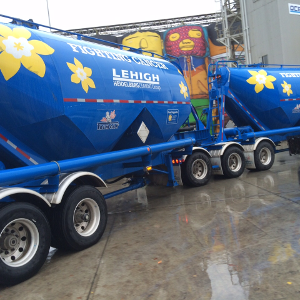
Resources and More Information
ASTM C150 Standard Specification for Portland Cement
https://www.astm.org/Standards/C150.htm
Design and Control of Concrete Mixtures, Portland Cement Association’s reference on the fundamentals of concrete technology and construction.
http://members.cement.org/EBiz55/Bookstore/BookstoreHome.aspx
Portland Cement Association
http://www.cement.org/cement-concrete-applications/how-cement-is-made
Canadian Standards Association
http://www.csagroup.org
Product Data Sheets
Leigh Cement – USA Portland Cement
Leigh Cement – CAN Portland Cement
